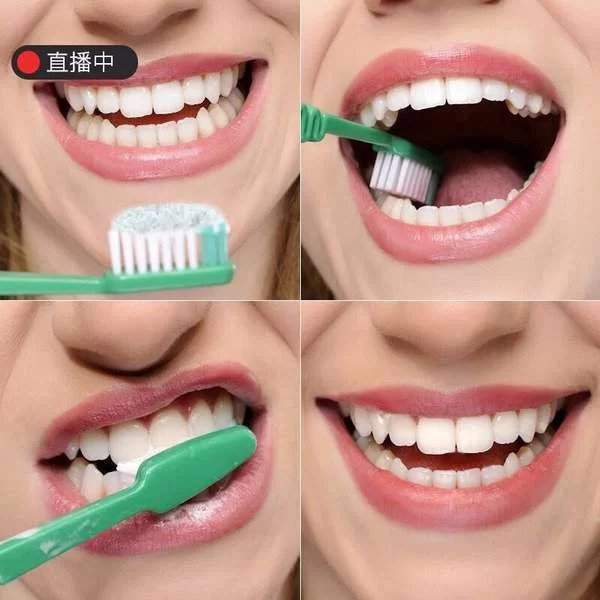Over centuries now, we have taken on the habit of regularly brushing our teeth. You can decide to brush it either in the morning or evening, or both morning and evening. The American Dental Association confirms that it is advisable to brush your teeth at least twice a day. Fluoride toothpaste will also go a long way in helping you achieve your aim. Brushing your teeth helps to maintain good hygiene, healthy gums, strong dentition, and so on. Proper dental hygiene allows for consistent brushing of the teeth, flossing, and so on.
But the question is do you know how to brush your teeth? When you wake up in the morning and use your toothbrush, are you doing it right?. This article will discuss the best ways and methods to effectively brush your teeth and maintain good dental hygiene.
How to Brush Your Teeth.
There are varieties of toothbrushes at local stores but it is advisable to go with your dentist’s prescription. Generally, you can grab a soft toothbrush with bristles and fluoride toothpaste. Your toothpaste can also be based on your preference. But to maintain healthy dental hygiene, fluoride toothpaste is recommended. To properly brush your teeth, you need to follow the following steps as your routine;
- To begin, grab a small-headed, soft-bristled toothbrush with your fingers (not your fist). Then squeeze a pea-sized dab of fluoride toothpaste onto it.
- Hold the bristles at a 45-degree angle upward against the outside of your top teeth, near the gum line.
- Sweep the brush back and forth in smooth strokes over the teeth and gums. You can clean the teeth in an elliptical (circular) motion if you like.
- Make sure the areas between your teeth are clean: brush food particles away from the gums using a sweeping motion.
- Move to the neighboring section of your teeth and repeat when you’ve completed one brush-width. Continue cleaning the outside of the top row of teeth until they are all clean.
- Now it’s time to move on to the lower teeth. Repeat the operation, tilting the brush down at a 45-degree angle toward the gum line. Complete the cleaning of the bottom teeth’ exterior surfaces.
- Continue to the top teeth’ insides. Clean the inside of the top teeth with gentle but thorough strokes, tilting the bristles up toward the gums.
- Turn your attention to the interior of your bottom teeth. Reverse the operation by tilting the brush down.
- It’s time to move on to the chewing surfaces: Clean the ridges and valleys of the back teeth while holding the bristles flat on the molars. Do this for all of your upper and lower teeth.
- To finish, lightly brush your tongue to remove bacteria and freshen your breath.
Precautions to take when brushing your teeth.
- Try to brush twice a day.
Brushing for two minutes should be your goal each time. However, the average length of time spent brushing one’s teeth is 45 seconds. Because the fluoride hasn’t had enough time to adhere to the tooth enamel, your teeth are less protected against food and infection. It’s beneficial to time yourself brushing your teeth, perhaps on your phone or while listening to music. At first glance, two minutes may appear to be a long time. If this is the case, you were probably not brushing for long enough in the first place.
- Do not brush your teeth too frequently.
Brushing your teeth too regularly, on the other hand, is a less common mistake that can cause more harm than benefit.
Brushing after every meal may have been recommended to you. But it is unnecessary and can erode your teeth’ enamel as well as irritate and damage your gums. Brushing your teeth for more than two minutes is the same.
- Always brush your teeth in a circular motion.
When it comes to brushing one’s teeth, there are a few ways to go wrong. Brushing your teeth should be done in circular strokes, gently but forcefully. You should concentrate on each tooth individually, making sure to cover all of the necessary areas. The delicate tissue lining between your teeth and gums can be eroded by side-to-side and up-and-down strokes. Brushing in a circular motion is considerably gentler than brushing in a straight line. You should also hold the brush at a 45-degree angle to allow the bristles to efficiently clean the teeth and gum line.
Another prevalent issue is that many people brush their teeth too forcefully. It causes damage to the teeth’ outer surface and irritation to the gums.
- Do not use a hard toothbrush
Brushes with more abrasive bristles can damage your gums and lose protective enamel. If you prefer to clean your teeth with a manual toothbrush, choose one with softer bristles. Using an electric toothbrush, on the other hand, is one technique to combat this. When working with a manual, people tend to apply more force. Because of the vibrations, It is less required to apply more pressure with an electric brush. You could instead rely on the brush to perform the work.
- Always replace your toothbrush regularly.
If you brush your teeth twice a day, every day, a new brush, or brush head, should be used every three months. This equates to about 200 uses. The bristles begin to wear down after this period. They are less effective at eliminating dirt from your teeth. Furthermore, dirt and bacteria will begin to collect on the brush with time, necessitating its replacement.
- Avoid brushing immediately after eating.
Due to a change in pH values, saliva in your mouth becomes more acidic after you’ve completed eating. Before brushing your teeth, you should wait 30 minutes after eating. This is ample time for your mouth’s pH levels to restore to normal. You’d instead be brushing acidic saliva into your tooth enamel, which is harmful.
